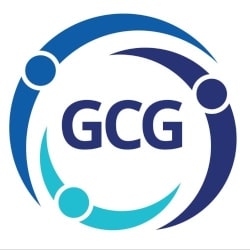Do you have a USP, PBS, or VPS on LinkedIn?


Do you have a USP, PBS, or VPS on LinkedIn? Unique Selling Proposition, Personal Branding Statement, and Value Proposition Statement are the full terms for the acronyms.
Unique Selling Proposition (USP)
In 1961, Rosser Reeves published a book called Reality in Advertising, which is still available for sale today and is considered a classic.
In the book, he wrote about a Unique Selling Proposition (USP), which was meant for businesses to share their proposition with buyers, offer something different than their competitors, and be strong enough to move millions.
As an individual, you can create a USP, which should be memorable and make an impression.
What do you offer? Why should someone hire you or buy from you? What makes you unique or different than others? How will people remember you?
Personal Brand Statement (PBS)
According to Indeed, “personal brand statements are brief statements that summarize what you do, why you do it and what differentiates you from others in your field.”
In other words, it appears to be about the same thing as a USP. Still, it is meant for individuals instead of businesses, differentiating it from the original intention of Reeves’ USP.
A personal branding statement (PBS) is specific and notes your target audience and can be presented through quantifiable achievements, service offerings, questions, a summary, goals, and other ways.
The idea is to showcase your strengths concisely.
Value Proposition Statement (VPS)
According to Wordstream, a Value Proposition Statement (VPS) “tells prospects why they should do business with you rather than your competitors and makes the benefits of your products or services crystal clear from the outset.”
In contrast, the Unique Selling Proposition (USP) states how an organization stands out from its competitors, and the Value Proposition Statement (VPS) describes the benefits and problems that the product or service solves.
Use on LinkedIn
These three terms are all very similar, and people may use them interchangeably. Although used on websites, social media, and other marketing collateral, I want to share how to use them on LinkedIn.
You might consider using these in your headline or About section, or perhaps both, and it does not matter whether you are unemployed, self-employed, or employed,
Create something with the right mix of a key title, keywords, and a USP or equivalent that can be up to 220 characters.
Can you add emojis as part of those 220 characters? Yes, but I will typically add them towards the end of the 220 characters and not the beginning to play it safe, considering how Google indexes and how people search on Google.
If you are a job seeker, I would put the title of your future forward position first, followed by keywords and your USP, PBS, or VPS.
If you are an entrepreneur, I’m not sure anyone cares that you are a self-proclaimed President or CEO. It is more important to add the keywords of what you do and follow with your USP, PBS, or VPS.
If you are employed, you do not need to put your title or company name in your headline, as that information is elsewhere on your profile. Take advantage of building your brand with the keywords of what you do and follow with your USP, PBS, or VPS.
LinkedIn content creator Josue Valles has curated information and created some tremendous carousels on headlines if you want to gather some great ideas. Here is one with 28 templates and another with 20 templates, which may inspire you.
I previously wrote about ways to be memorable on LinkedIn. I also included links to other articles relating to elevator pitches and how to boost your LinkedIn headline score under the Headline section with the online analyzer tool I use. You may get some inspo from reading these other articles.
The headline analyzer, Sharethrough, has been a handy tool in the process, and I also get fodder from asking ChatGPT.
For one client, I got a 100 score for each category of the headline analyzer: overall headline, engagement, and impression, so it IS possible!
Remember, your LinkedIn headline is like Manhattan real estate, so treat it as such. Be memorable and make an impression, perhaps with a vivid image, when you create your USP, PBS, or VPS.
Have you read the last article, General & LinkedIn Tips on Bad References from a Former Employer
NEXT STEPS
- Subscribe to my newsletter on LinkedIn for bright ideas to manage your career.
- Join as a member at https://greatcareers.org/membership of the #1 business networking association on the Philadelphia Business Journal’s Book of Lists three years in a row!
- If you need a resume or LinkedIn profile to get you to your next step, book a call to chat!
- Follow #GreatCareersPHL
UPCOMING EVENTS – Registration info is on the events page.
- Tue Sept 26 – Meet the Author Pyramid Club Author Panel
- Tues Sept 26 – Business Executives Networking Group (BENG) & Guests meeting
- Wed Sept 27 – Resilience Building Call-In
- Wed Sept 27 – Your Networking Strategy: Who to Approach & How to Approach Them
- Thu Sept 28 – Career Success Group Job Seeker Accountability & Networking
- Thu Sept 28 – How to Analyze Your Headlines for LinkedIn, Emails, and Blogs
Connect With Your Community
Subscribe to stay informed!
"*" indicates required fields


































![95000-1023_ACJ_BannerAd[1]](https://vista.today/wp-content/uploads/2023/03/95000-1023_ACJ_BannerAd1.jpg)














